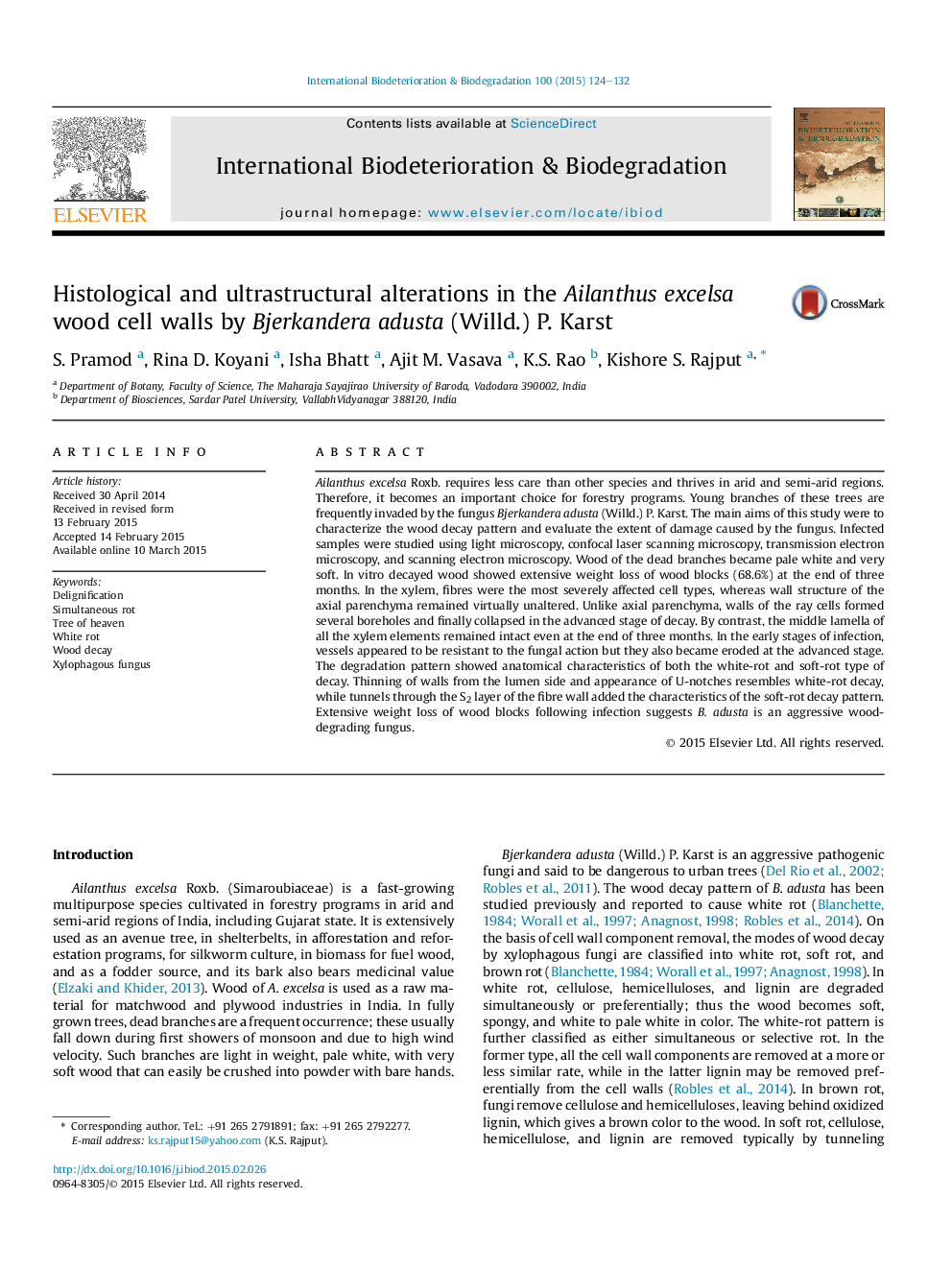| کد مقاله | کد نشریه | سال انتشار | مقاله انگلیسی | نسخه تمام متن |
|---|---|---|---|---|
| 4364443 | 1616317 | 2015 | 9 صفحه PDF | دانلود رایگان |
عنوان انگلیسی مقاله ISI
Histological and ultrastructural alterations in the Ailanthus excelsa wood cell walls by Bjerkandera adusta (Willd.) P. Karst
دانلود مقاله + سفارش ترجمه
دانلود مقاله ISI انگلیسی
رایگان برای ایرانیان
موضوعات مرتبط
علوم زیستی و بیوفناوری
علوم محیط زیست
علوم زیست محیطی (عمومی)
پیش نمایش صفحه اول مقاله

چکیده انگلیسی
Ailanthus excelsa Roxb. requires less care than other species and thrives in arid and semi-arid regions. Therefore, it becomes an important choice for forestry programs. Young branches of these trees are frequently invaded by the fungus Bjerkandera adusta (Willd.) P. Karst. The main aims of this study were to characterize the wood decay pattern and evaluate the extent of damage caused by the fungus. Infected samples were studied using light microscopy, confocal laser scanning microscopy, transmission electron microscopy, and scanning electron microscopy. Wood of the dead branches became pale white and very soft. In vitro decayed wood showed extensive weight loss of wood blocks (68.6%) at the end of three months. In the xylem, fibres were the most severely affected cell types, whereas wall structure of the axial parenchyma remained virtually unaltered. Unlike axial parenchyma, walls of the ray cells formed several boreholes and finally collapsed in the advanced stage of decay. By contrast, the middle lamella of all the xylem elements remained intact even at the end of three months. In the early stages of infection, vessels appeared to be resistant to the fungal action but they also became eroded at the advanced stage. The degradation pattern showed anatomical characteristics of both the white-rot and soft-rot type of decay. Thinning of walls from the lumen side and appearance of U-notches resembles white-rot decay, while tunnels through the S2 layer of the fibre wall added the characteristics of the soft-rot decay pattern. Extensive weight loss of wood blocks following infection suggests B. adusta is an aggressive wood-degrading fungus.
ناشر
Database: Elsevier - ScienceDirect (ساینس دایرکت)
Journal: International Biodeterioration & Biodegradation - Volume 100, May 2015, Pages 124-132
Journal: International Biodeterioration & Biodegradation - Volume 100, May 2015, Pages 124-132
نویسندگان
S. Pramod, Rina D. Koyani, Isha Bhatt, Ajit M. Vasava, K.S. Rao, Kishore S. Rajput,